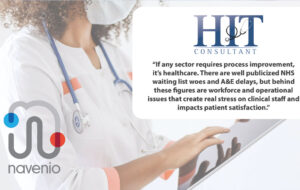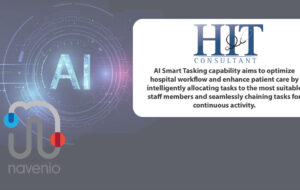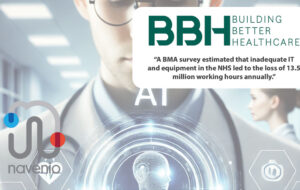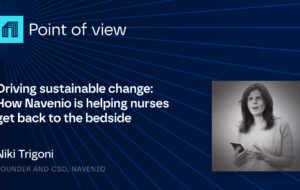Health Tech Digital: How transformative technology drives improved NHS response times
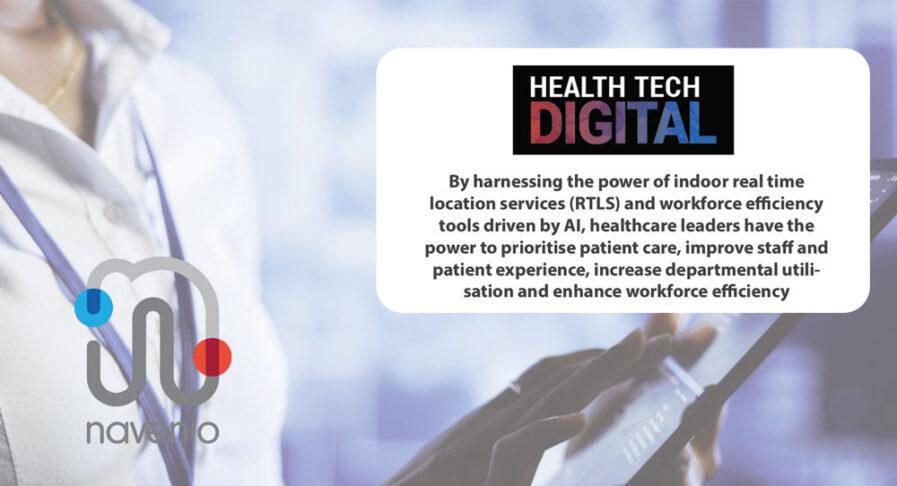
As published by HealthTechDigital.com
The NHS, one of Europe’s largest employers, operates through a vast network of healthcare facilities where the majority of staff work indoors, delivering essential care services and support to patients. Yet managing resources and difficult communication across care teams is currently adding to the pressure of healthcare workers. A seamless workflow is the goal that can help alleviate the impact of growing staff shortages and building pressure, and the innovations that can make this happen are the key.
Current hospital infrastructure focuses on patient records, admissions and discharge, but does not consider the optimisation for workforce efficiency and patient flow. In order to fill this gap, hospitals need a non-invasive, and supportive technology to address the critical NHS goals of cutting waitlists and reducing wait times, and supporting their workforce through training, retention and modernising the way staff work.
By harnessing the power of indoor real time location services (RTLS) and workforce efficiency tools driven by AI, healthcare leaders have the power to prioritise patient care, improve staff and patient experience, increase departmental utilisation and enhance workforce efficiency.
Reducing staff pressures and optimising care
In the fast-paced and demanding environment of healthcare, ensuring hospital staff are able to see patients quickly and effectively, is crucial to providing an optimal patient experience.
For example, with real-time location data readily available on the whereabouts of personnel and staff, in addition to balanced AI tasking, requests can be made and tasks can be routed to the best person to provide the service, much like a ride-share application. For example, if a patient requires a radiology service, such as a bedside ultrasound scan, the clinician simply makes a direct request for support and Navenio prioritises and detects the closest appropriately skilled resource and locates related medical assets. The radiology tech accepts the request, allowing the clinician to review their location in real-time as they approach, offering the ability to prep the patient for arrival. Once they accept the task, the nurse or healthcare professional knows exactly when that service provider will arrive at the bedside, allowing them to properly prepare the patient.
As patient wait times continue to increase, hospital administrators will have critical data at their fingertips to make data-driven decisions regarding task allocation to assist in eliminating existing backlogs efficiently and effectively. A key benefit of this type of transformative technology is its ability to improve the number of tasks completed, eliminating unnecessary delays, reducing idle time, and minimising the risk of errors or miscommunication.
Enhanced asset management
Expensive capital outlays and service inefficiencies occur when clinicians and non-clinicians cannot find the equipment or assets that they need. Recent figures show that more than one-third of nurses spend at least an hour finding items of equipment during an average hospital shift. This time lost creates inefficiencies, and the belief that there is limited equipment to service their patients leads to overspending on capital equipment in a time when hospital budgets are tight.
Additionally, staff retention rates are positively impacted by this transformation in working time and improved workload. By optimising task assignments and workload distribution, hospitals can alleviate stress and burnout among their employees. For example, tasks can be scheduled throughout the day based on location and workload. Therefore, nurses and hospital staff members are increasingly supported and empowered when they are in the right place at the right time, enabling them to perform their duties effectively.
If healthcare facilities can accurately track and monitor the location of their assets, it can lead to drastic improvements in resource utilisation, help improve employee well being, form streamlined workflows and result in significant cost savings in both time spent and capital outlays.
Innovative, non-invasive technology to drive transformative change
To drive this change, introducing non-invasive, innovative technology can deliver highly accurate positioning data. For example, systems that use AI tasking algorithms have the ability to assign tasks in a balanced way that drives transformation with ease.
With enhanced workforce efficiency processes in place, communication between nurses and their patients, and between nursing and ancillary staff is drastically improved. This will help improve patient experience, with more patients being seen and cared for. It’s important to ensure that staff are well supported and that their wellbeing is prioritised. By maximising staff efficiency hospitals can reduce the need for overtime hours or the hiring of additional personnel, whilst also generating substantial financial savings. These savings can be redirected towards other critical areas of need and boost overall patient experience.
Innovations and technology have the ability to reduce response times for a wide range of clinical and operational activity. With greater access to staff and patient communication, leads to higher patient satisfaction and enables more nurses to get back to the bedside.
A reshaped healthcare landscape
The NHS runs through a complex network of facilities with a vast range of assets. Managing it effectively is full of challenges. Yet embracing transformative technology holds the potential to reshape this healthcare landscape to benefit both nurses and patients. By remodelling how it manages its staff and assets, the NHS can take significant strides towards achieving its goals of decreasing patient backlog and modernising the way clinicians and ancillary staff work.

